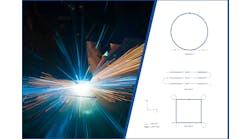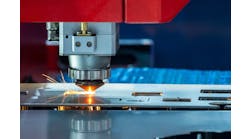An in-depth understanding of machine mechanics is critical to proper selection and design of machine automation systems. This is especially true for motion control, an area where the multiplicity of choices can be overwhelming and where factors such as load, orientation, speed, travel, precision, environment and duty cycle all must be considered simultaneously.
Perhaps the simplest way to evaluate available motion control options is from lowest to highest cost. Electromechanical systems almost always are less expensive than linear motors, so it makes sense to use these systems if capabilities fit the application.
Linear motors move loads in a linear path without interposing mechanical components. Electromechanical solutions start with rotary motors, and then translate rotary motion to linear motion through interposing components such as ball screws, acme screws and rolling ring drives.
Those examples represent only a few areas where the performance of linear motors necessitates their use instead of electromechanical solutions. “When very high dynamic loads are involved, and sub-micron positional accuracy is required, linear motors have advantages—although they carry a high cost,” says Tom Solon, PE, sales/applications engineer with . “In ultraclean environments, linear motors can move loads without physical contact, thus reducing the risk of contamination. In most other instances, we can configure a mechanical drive that will perform as well or better.”
Electromechanical solutions also compete with pneumatic and hydraulic solutions. “Applications with an infinite number of moves or extremely harsh environments often favor pneumatic or hydraulic activation,” says Lee Stephens, systems engineer with .
If the aforementioned requirements are not needed, then an electromechanical solution should be considered, and investigation of the myriad available technologies can commence. “Often the most difficult challenge is simply picking the right electromechanical motion technology,” believes Kevin Gingerich, director of marketing services for . “Bosch Rexroth alone offers 15 styles of actuators, self-driven ball nuts, pre-configured systems and linear motors. The best service we can provide is to help our customers sort through the choices and pick the best system.”
Where is the best place to begin? Many agree that motors and associated controls should be selected last because motor and control requirements are vastly different, depending on which electromechanical solution is selected. “We recommend that our customers select the motor last,” comments Solon. “This gives them freedom to optimize efficiency, speed, resonances, loads, cost and other important characteristics.”
Other mechanical considerations also come into play prior to selecting motors and controls. “The first step is designing a rigid and stable platform for mounting, assembling and installing the actuator,” says Jason Wong, application engineering manager with .
Selection and design of electromechanical motion systems require experience in machine mechanics and control systems, and this combination of experience is hard to find. Vendors recognize this and offering consulting services, design software, and pre-packaged systems.
“Larger suppliers of linear actuators have begun to offer pre-packaged, pre-parameterized motion systems which can reduce the design effort considerably,” opines Gingerich. “These systems often come in one, two, or three axes and can be configured, ordered, and installed quickly.”
Pre-packaged systems are considered by many as an important trend. “German and Asian-based actuator companies are working on joint ventures with motor and drive companies to provide turnkey solutions,” says Robert Bigler, CEO of . “There is a great benefit to integrating controllers, drive amplifiers, and motors directly into the actuators to be able to provide a fully programmable electromechanical system to the user. This methodology moves concepts from design to production floor faster and at a substantially reduced cost.”
Although vendors stand ready to help with pre-packaged solutions, motion system design software, and consulting services, machine builders have to exercise some caution. After all, vendors have a natural tendency to recommend their products. The services of a truly independent system integrator often can be useful if available in-house expertise is insufficient.
For electromechanical motion systems, the emerging trends that will most influence machine builder use are the lower cost, higher performance, and the smaller size of electrical and control systems components. Mechanical motion system components have been applied for decades and their designs are relatively mature, but electrical and control system components are improving rapidly. These improvements will allow electromechanical motion systems to replace manual machine operations in many instances.
Latest from Electromechanical
Latest from Electromechanical
Leaders relevant to this article:



